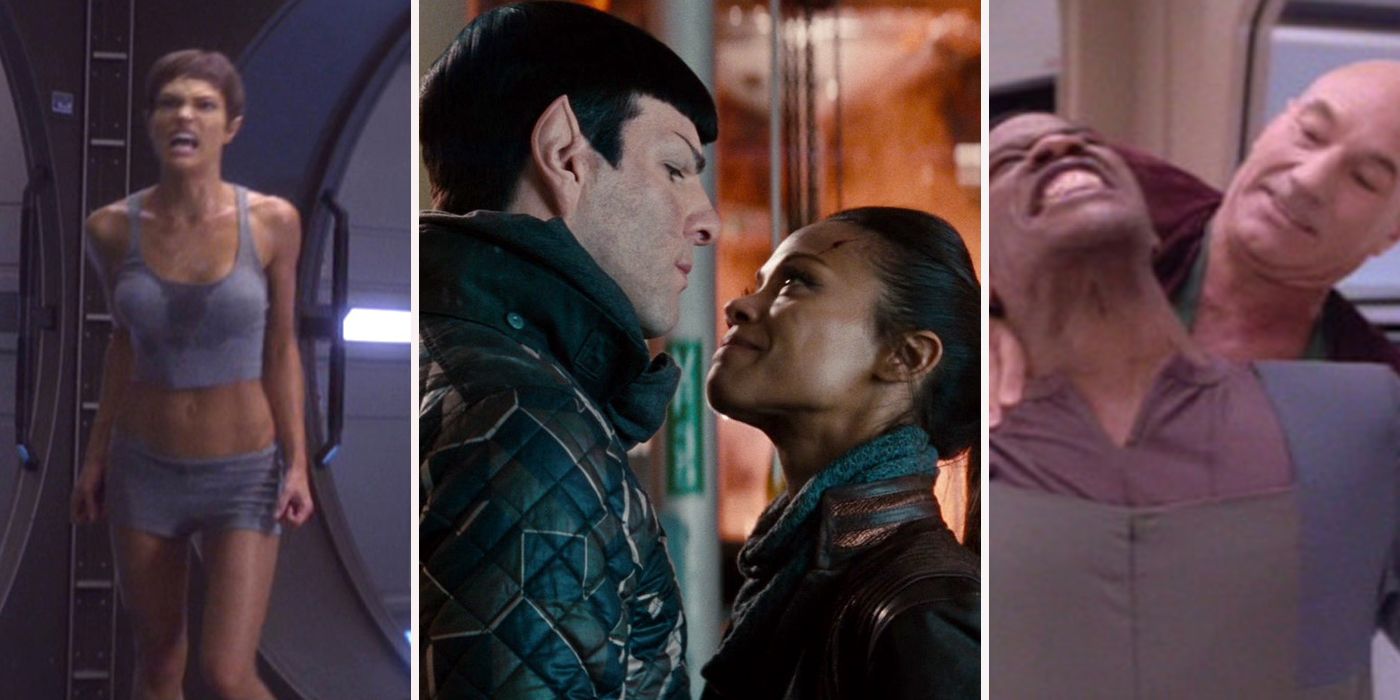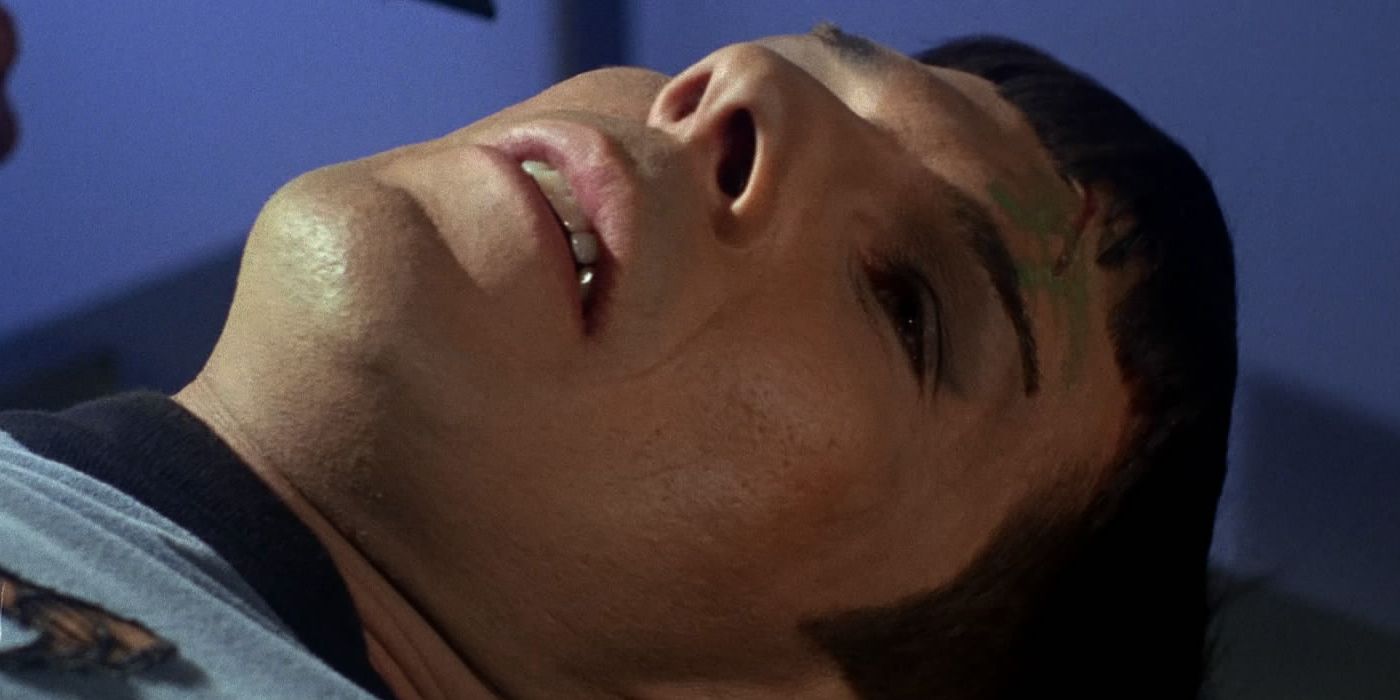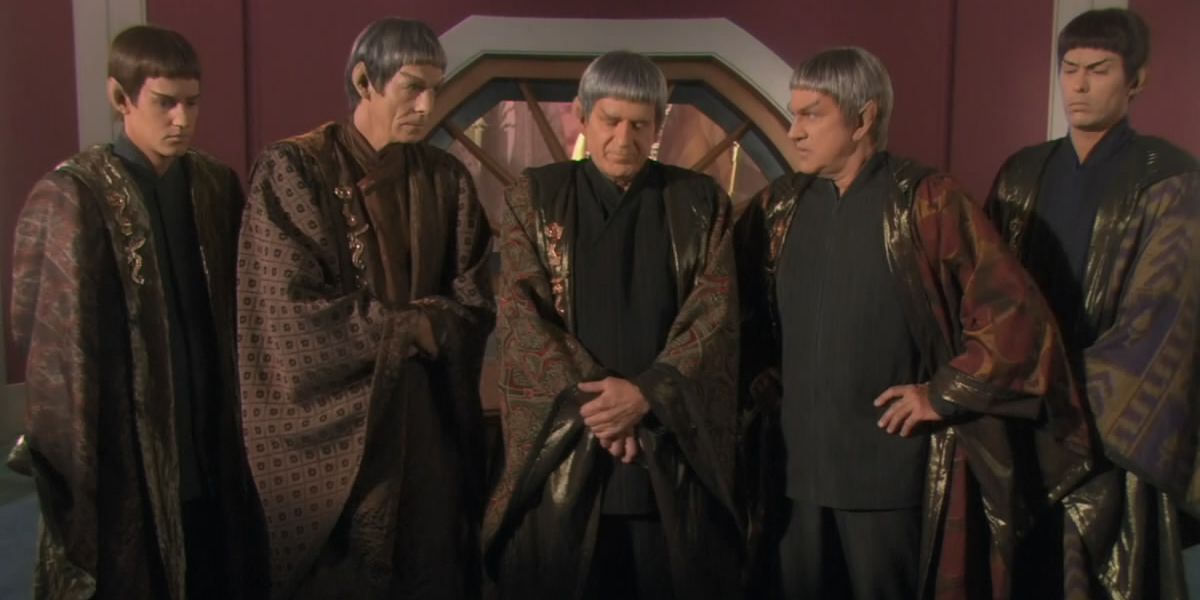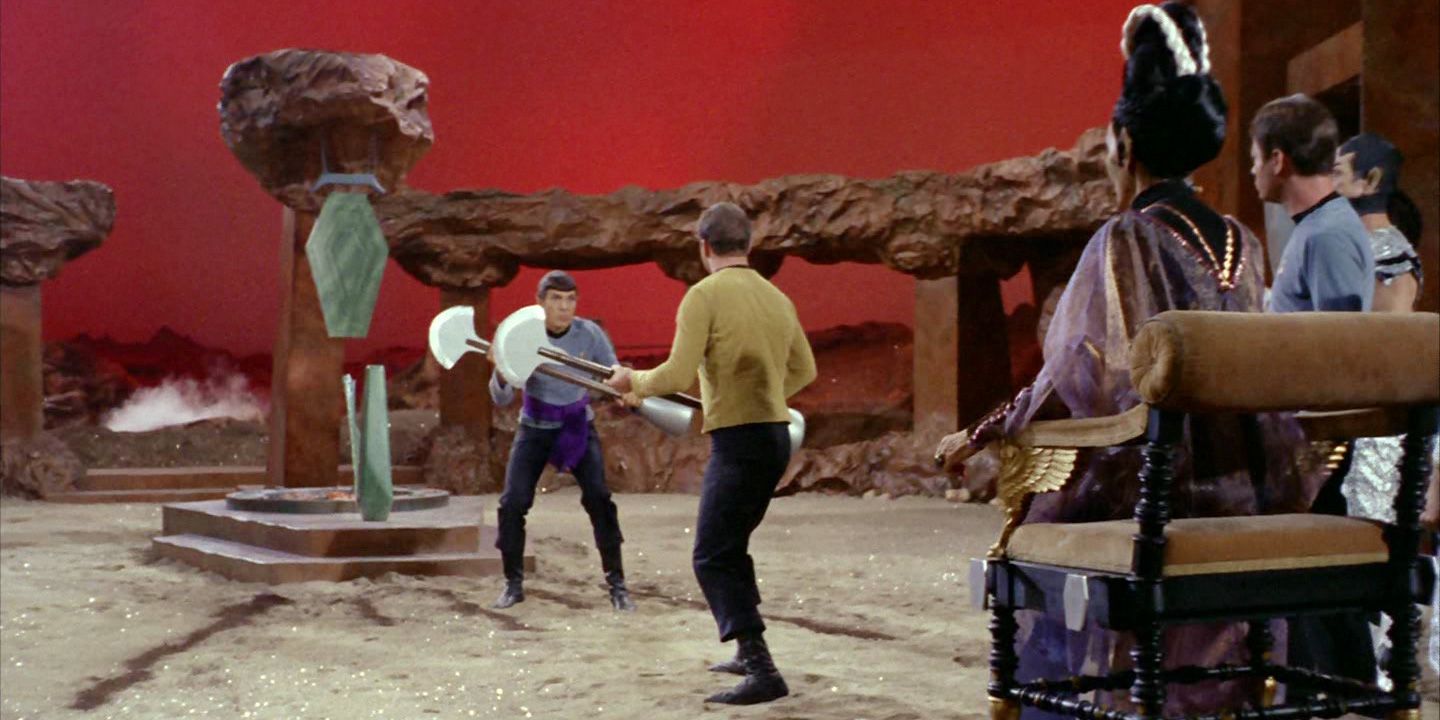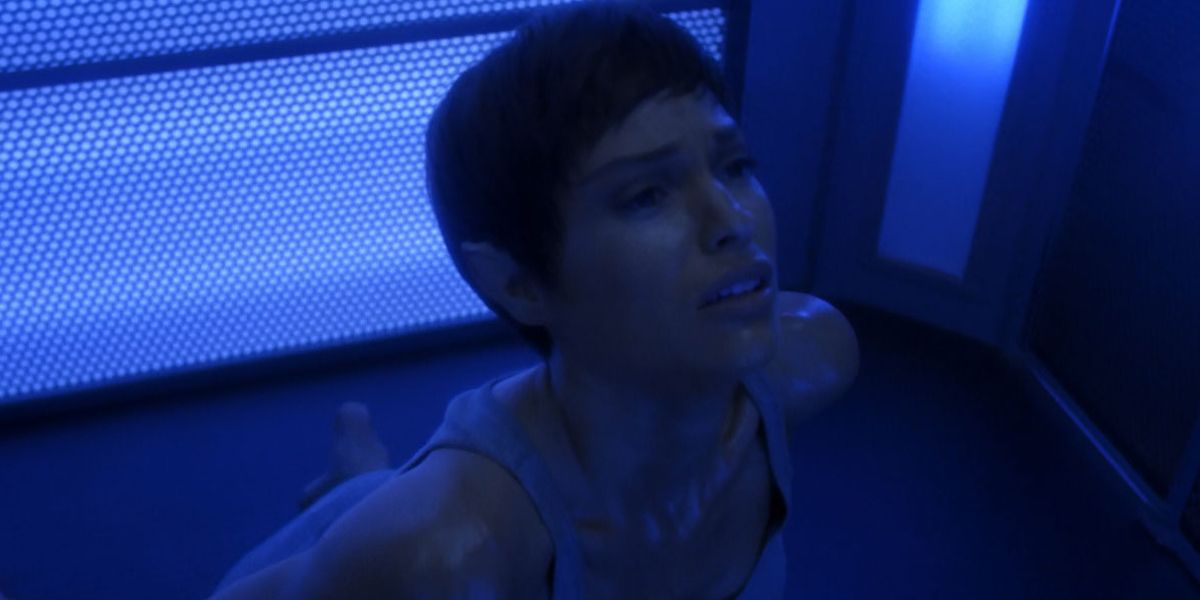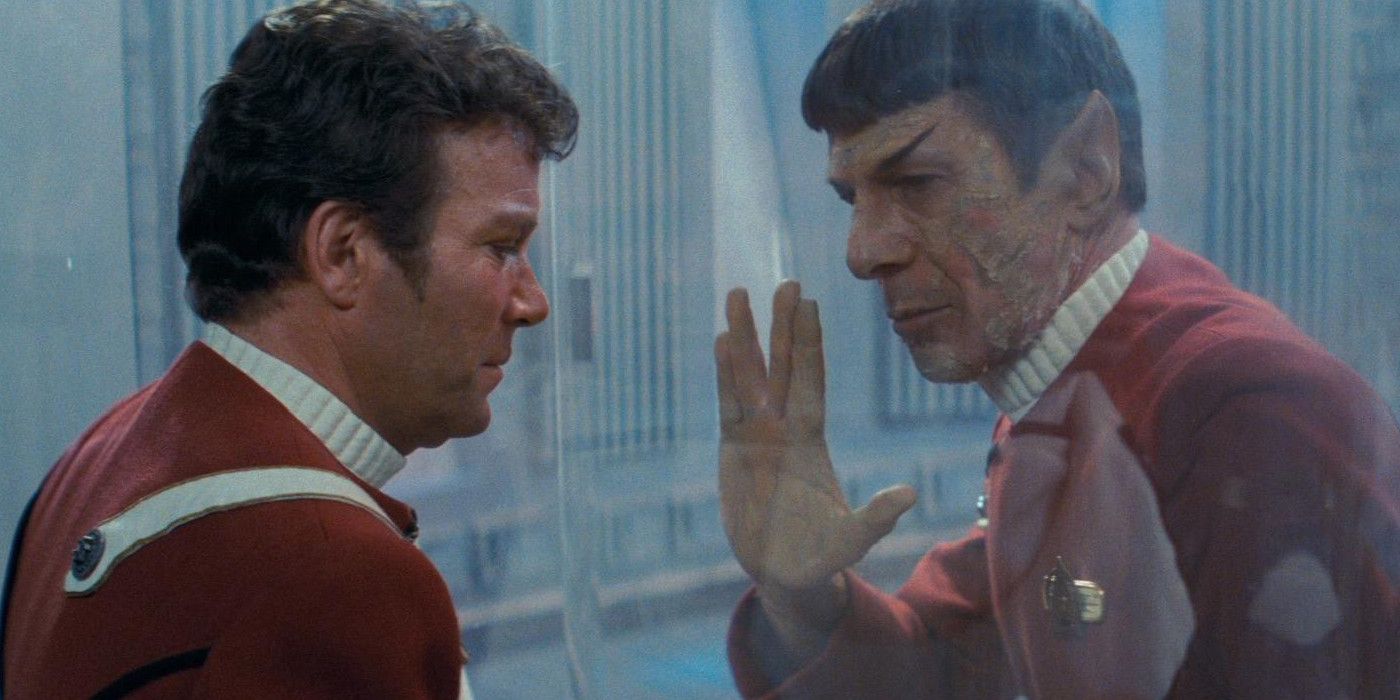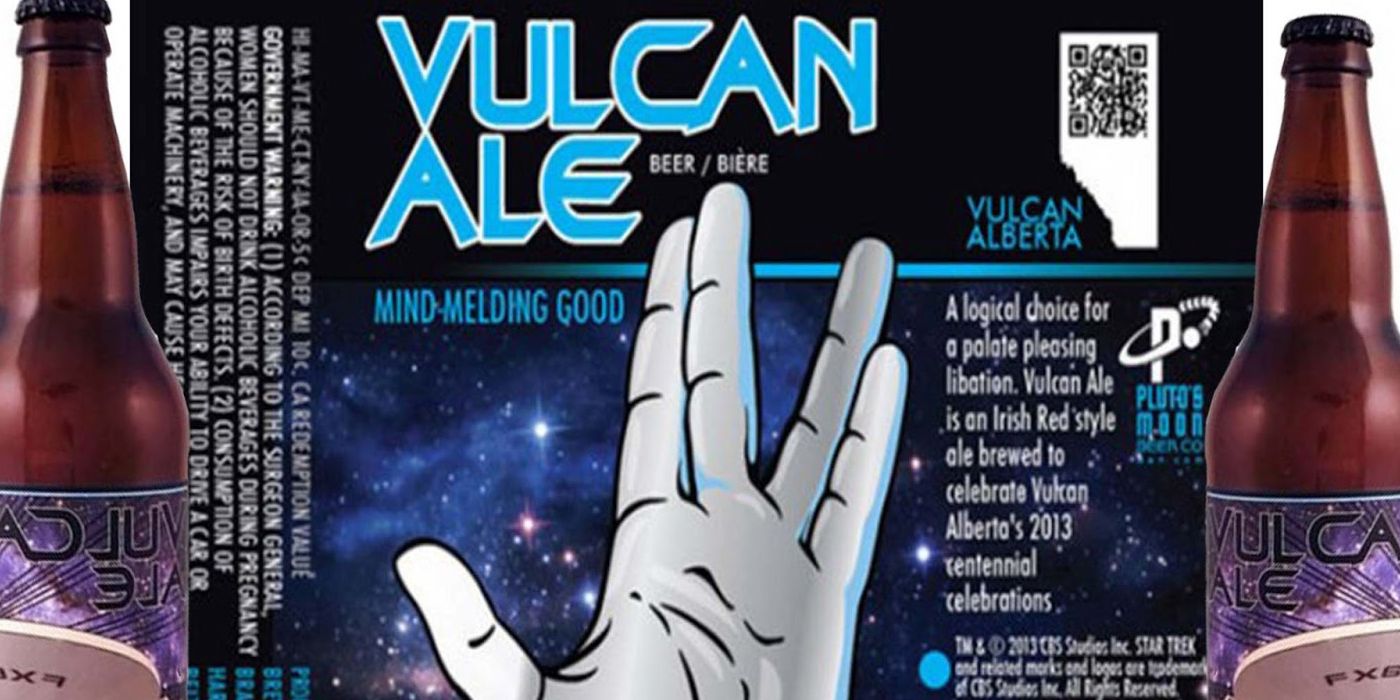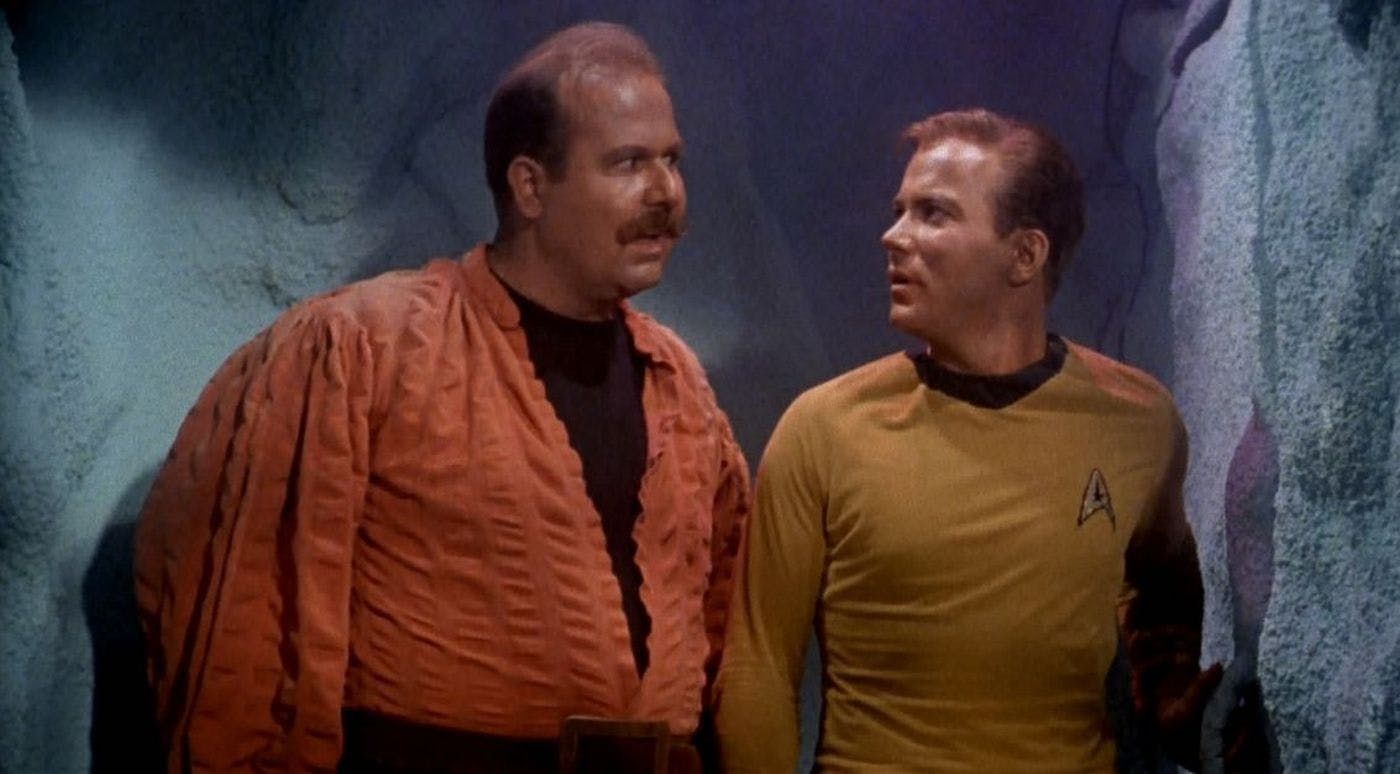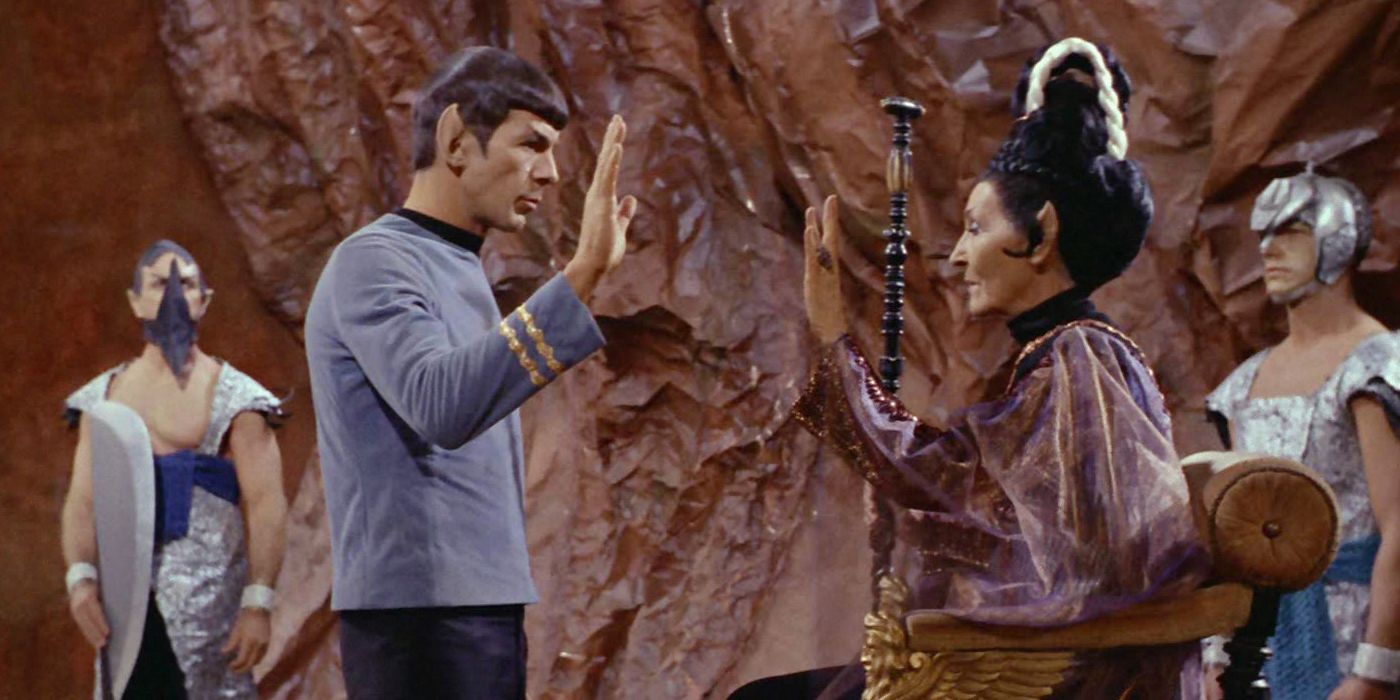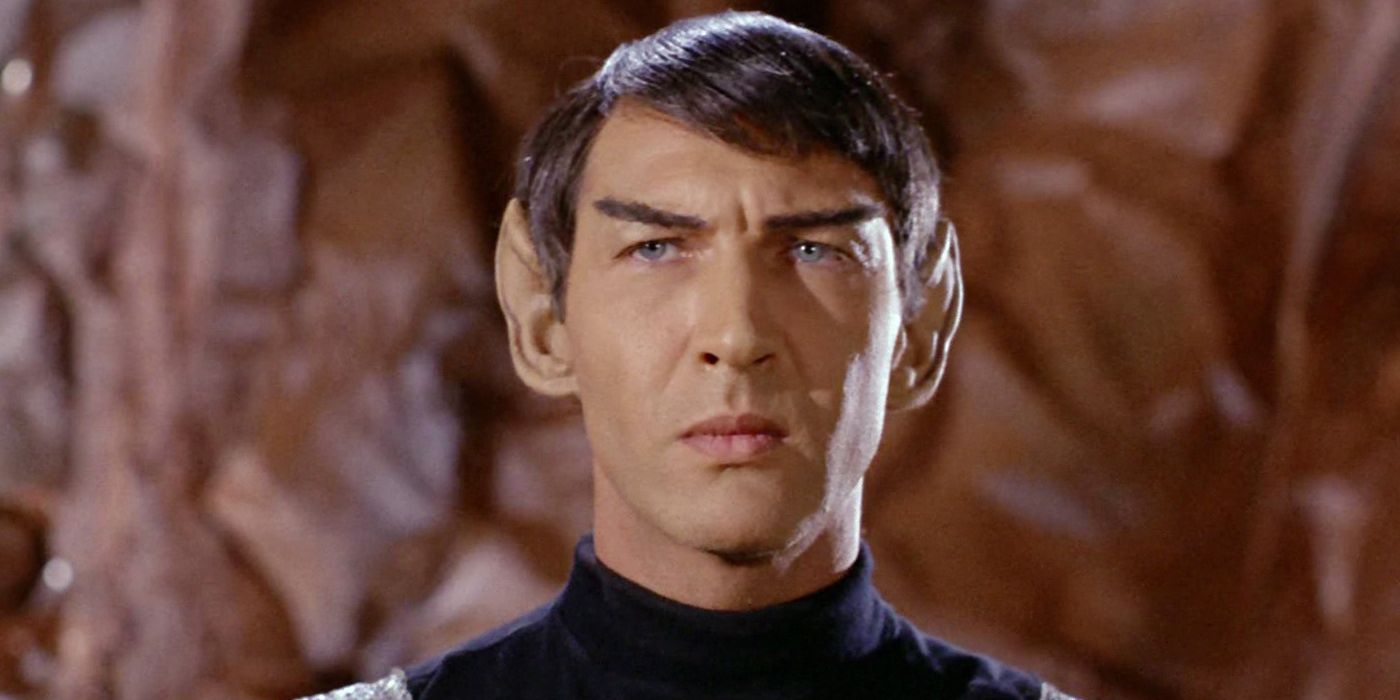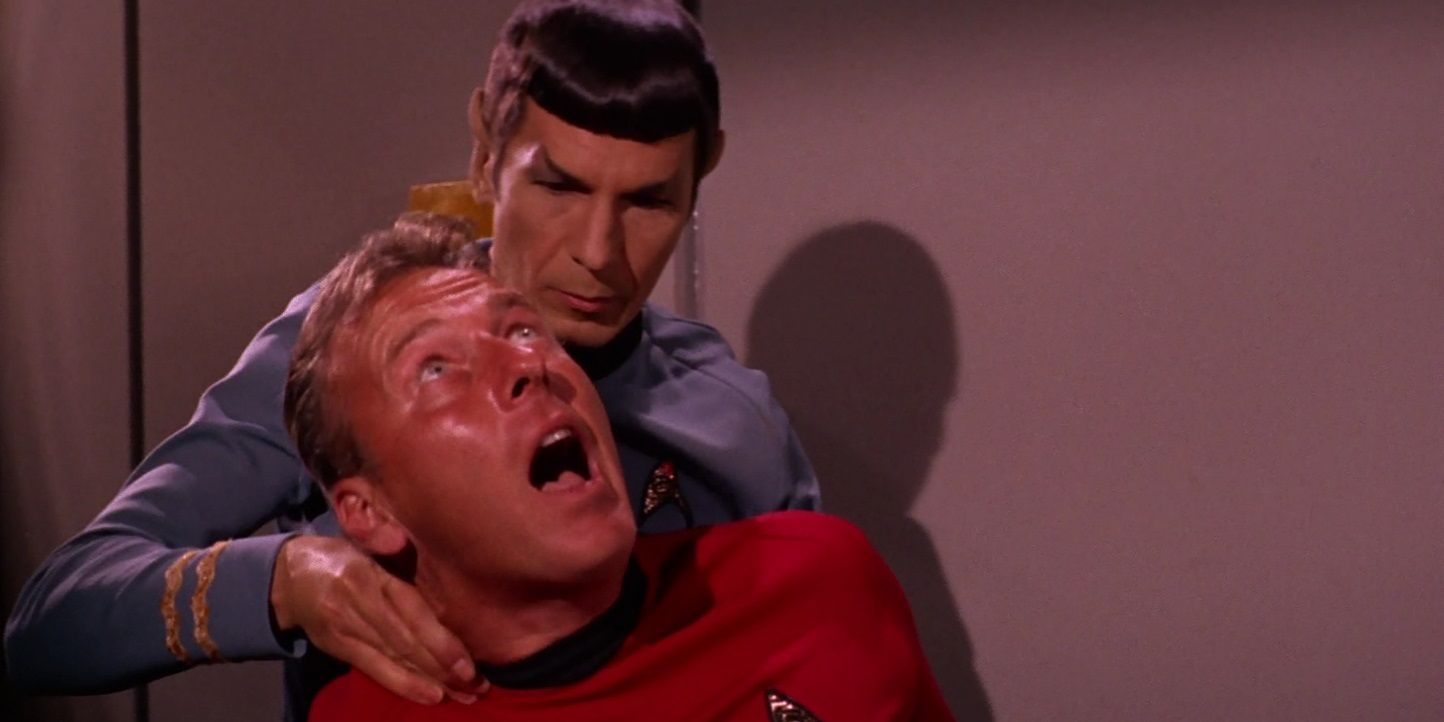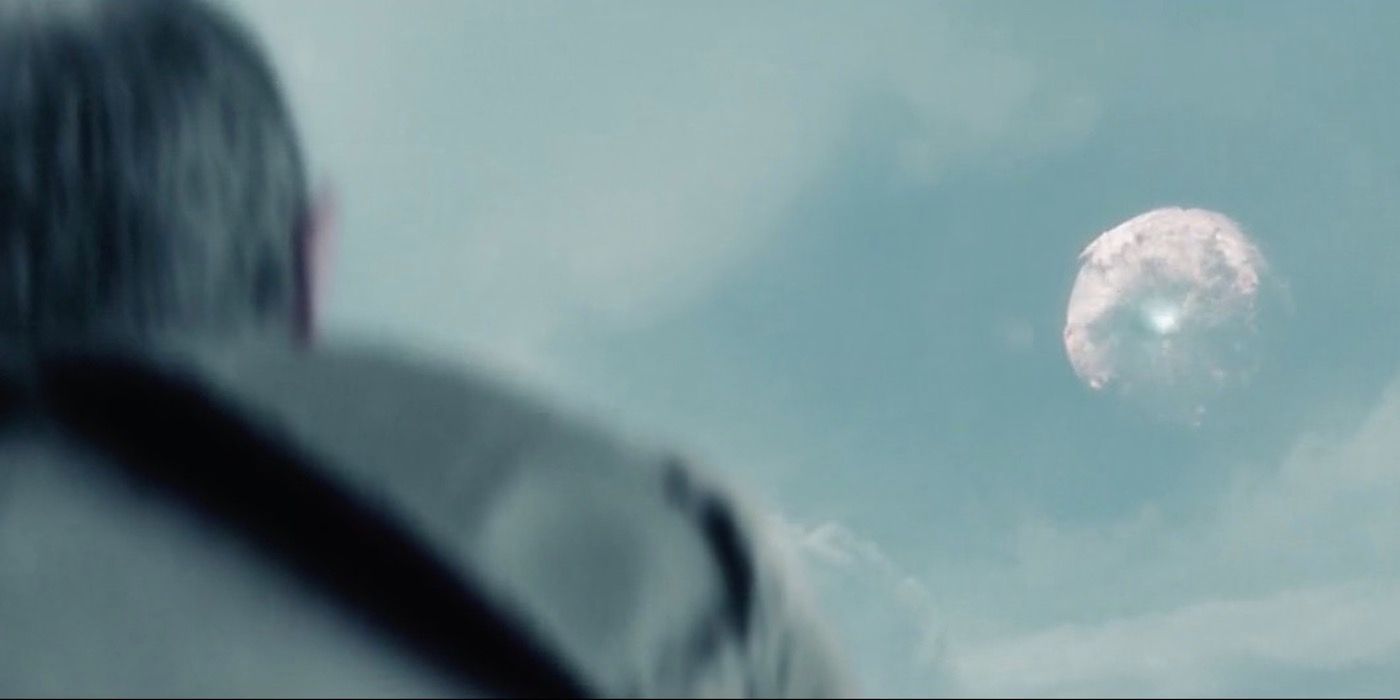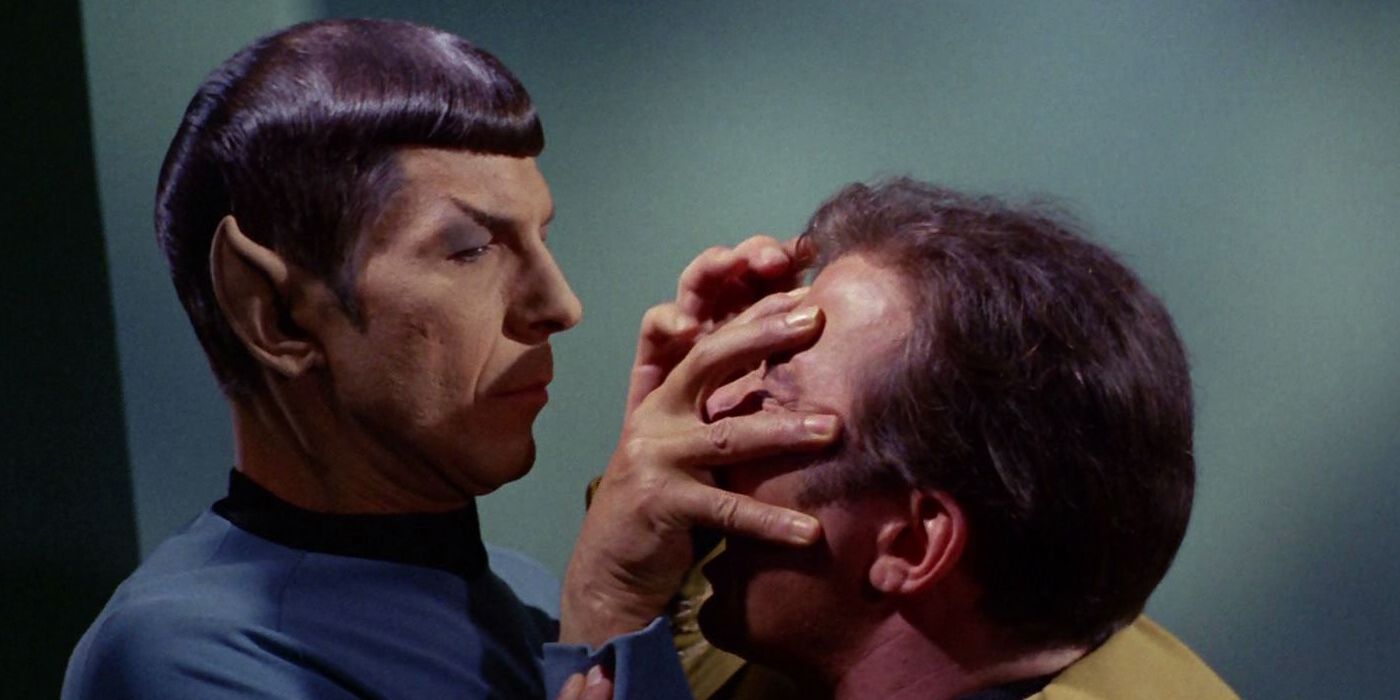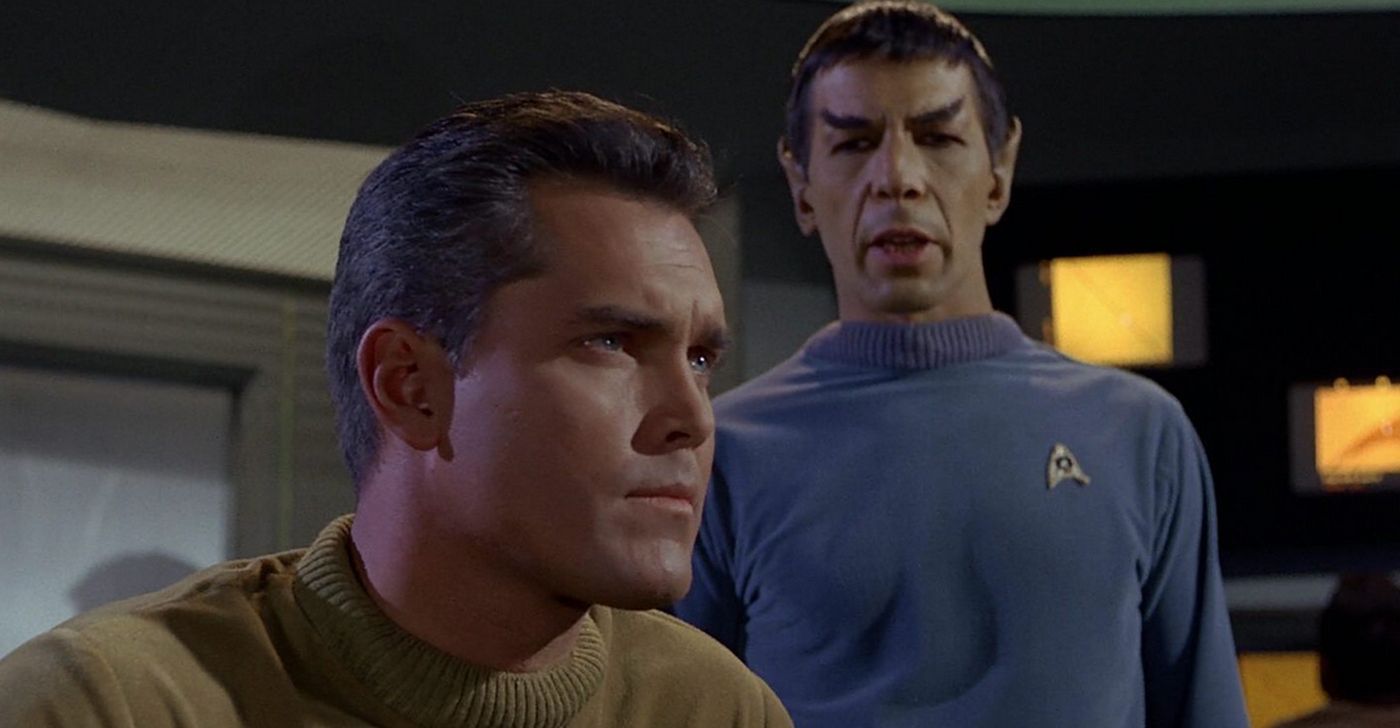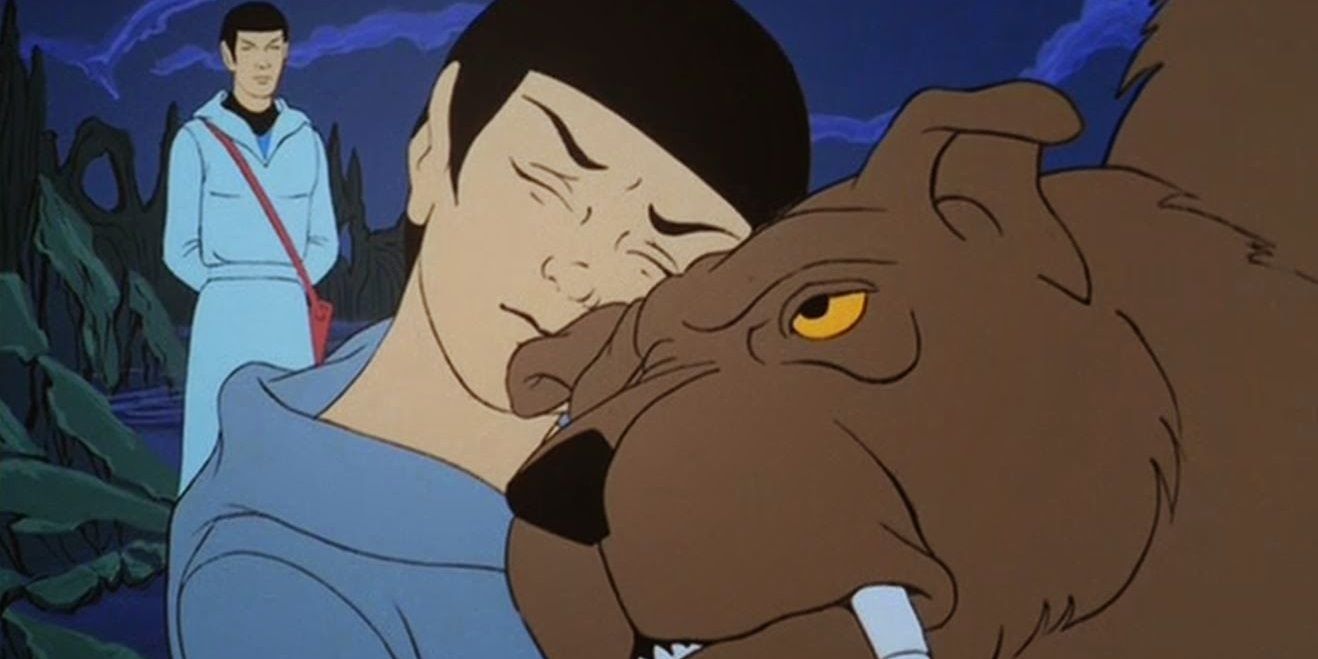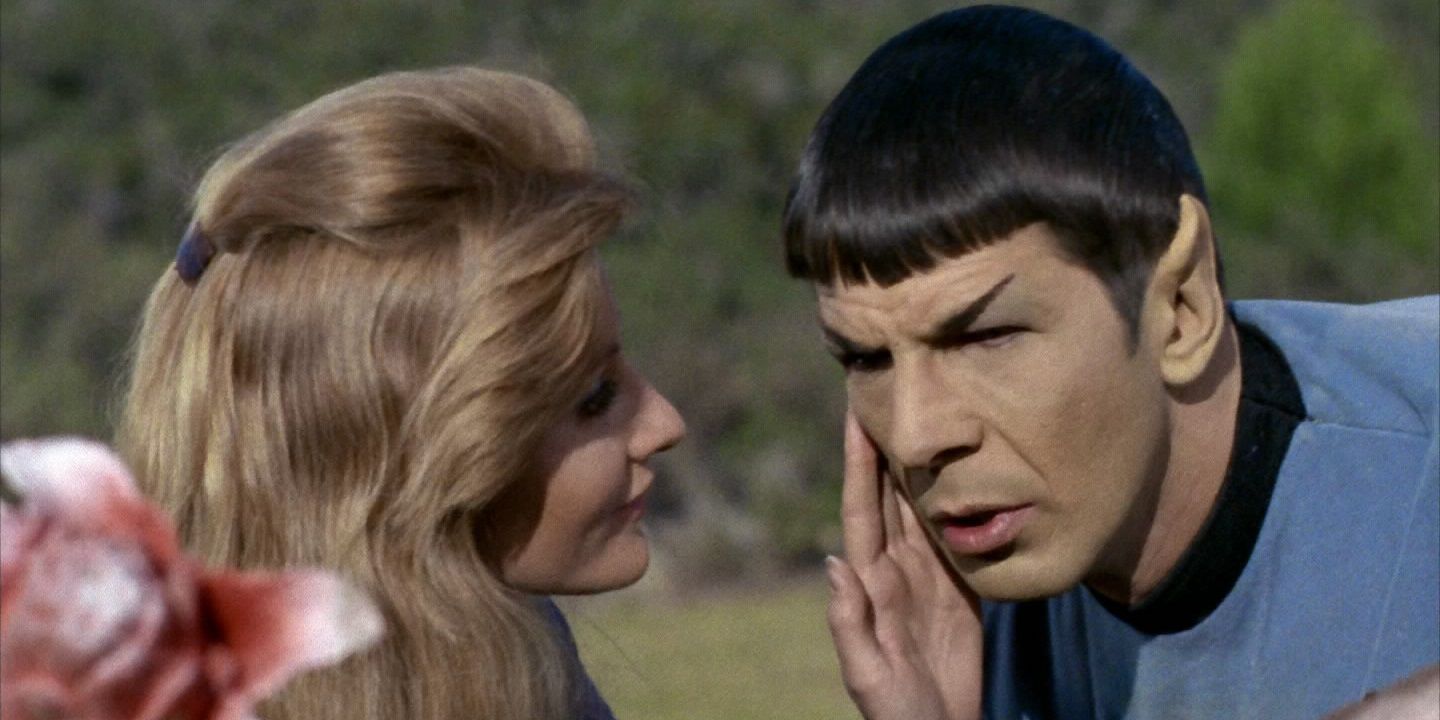The majority of the ships in Starfleet are crewed by different races from the various Federation planets. One of the exceptions to this was the Enterprise from Star Trek: The Original Series, where Spock was the only human/Vulcan hybrid aboard the ship.
This Enterprise would receive more alien crew members in The Animated Series and The Motion Picture, but Spock was the only alien representative for a long time.
Spock quickly became one of the most popular characters in Star Trek, as fans were fascinated by the Vulcan method of repressing their emotions. The fans tuned in every week to see Spock's perspective on things, while also waiting for him to inevitably lose control and start wrecking the ship.
Spock's popularity led to the Vulcans becoming one of the most important parts of Star Trek. This has led to numerous different interpretations of the Vulcans, not all of which gel together.
We are here today to try and make sense of the numerous contradictions concerning the Vulcans of Star Trek.
From the strange mixture of copper and iron to the retcon concerning their emotional state, here are the 15 Things That Make No Sense About Star Trek's Vulcans!
15. Copper Blood and Hybrid Children
One of the main ways in which Vulcans differ from humans is that their blood is copper-based, while human blood is iron-based. This is reflected in the fact that Vulcans have green blood, which is a trait that they share with the Romulans. The green blood also results in bruises that have a green tint.
It's possible for humans and Vulcans to breed and create hybrid children (like Spock) but the canon has differed on whether this can be done naturally or whether it requires a degree of genetic engineering to pull off.
The fact that humans and Vulcans can breed at all should be impossible, due to how fundamentally different their blood works.
Star Trek usually hasn't stressed over the details concerning inter-species breeding, but the Vulcan biology has been defined in such a way that any sort of hybrid child should be impossible.
14. Infinite Bigots In Infinite Hatred
It was said that Gene Roddenberry didn't want any kind of personal conflicts or disagreements between the crew members in Star Trek: The Next Generation, as humanity had evolved beyond pettiness.
This idea was ignored, as it would have made it incredibly difficult to write storylines for the show.
There have been other Star Trek writers who have gone in the opposite direction of Gene Roddenberry's idealism and used the pretense of utopia to justify bigotry.
This mostly happens with the Vulcans, who have commonly been portrayed as seeing themselves as superior to the other Federation races and ostracizing factions within their own species who don't adhere to the ancient ways.
The Vulcans were one of the founders of the Federation and their logical way of life should have no place for bigotry, yet they are commonly depicted as being one of the most judgemental and xenophobic species in Star Trek.
13. Divorce = Death
The Star Trek: The Original Series episode "Amok Time" introduced the concept of the pon farr to the series. This is a state that Vulcan males enter every seven years where they lose control over their emotions and must sleep with someone or die.
Spock's betrothed was a woman named T'Pring, who invoked the right of Kal-if-fee, which is essentially a deathmatch, where one Vulcan challenges another over a woman. This ritual ends when one competitor destroys another.
The existence of such a match within Vulcan society makes no sense for a number of reasons.
Why can't Vulcan women be allowed to choose their own mates in a way that doesn't involve ritualistic murder? The societies that make up the Federation are vehemently opposed to the death penalty in all but the most extreme cases, but the Vulcans still have arena battles?
12. Pon Farrs For Everyone
When the pon farr was introduced in "Amok Time" it was suggested that the condition only affected Vulcan males. This was later confirmed in Star Trek III: The Search for Spock by Saavik, who explains that the condition occurs every seven years and only affects Vulcan males.
The idea behind the pon farr is that it is a science fiction equivalent to a menstrual cycle for men. It became one of the most popular aspects of the series when it came to fan fiction and was seen as a convenient excuse to let Spock and Kirk get it on.
Everything we knew about the pon farr was later retconned by Star Trek: Enterprise, as the writers wanted to see Jolene Blalock writhe around on the ground.
This was when it was established that Vulcan women also went through the pon farr, which defied everything else we had learned about the condition.
11. The Spock Immortality Method
Leonard Nimoy only agreed to appear in Star Trek II: The Wrath of Khan if he were given a dramatic ending scene. This resulted in Spock passing away.
The writers left open the possibility of Spock's return by having him perform a weird maneuver on Dr. McCoy, which was later revealed to be Spock transferring a piece of mind into him, which was later used to revive Spock when it was moved into his new body.
If it's possible for Vulcans to cheat death like this, then why don't more of them do it?
They could keep clones of themselves and transfer their minds into a younger body, which could also be used to escape from the effects of a disease or physical condition, such as the Bendii Syndrome that ravaged Sarek in his old age. What would they have to lose?
10. Making Booze But Not Drinking It
Vulcans were originally a warlike race that revelled in bloodshed and violence. It seems that these poor barbarian Vulcans had to perform all of their rampages while totally sober, as Spock claimed in "The Conscience of the King" that the Vulcans were spared from alcohol.
It seems that Spock was grossly misinformed about the drinking habits of his father's people, as Vulcans are seen both brewing and consuming alcohol throughout the series.
Vulcans make their own port and have been doing so for at least three centuries, as Quark owns a bottle that is at least that old in Deep Space Nine. Vulcans were also seen drinking wine on rare occasion.
The most obvious solution is that Spock was just never invited to any of the cool parties when he was younger.
9. The Name Retcon
As Spock grew in popularity, so did the desire for Star Trek fans to learn more about the Vulcan people.
This extended to learning about the homeworld of the Vulcans, even though the budget restrictions and limited special effects technology of the time meant that the version of Vulcan that we saw in "Amok Time" was little more than a red backdrop and a sandy floor.
There was some confusion initially on what the name was for the natives of Vulcan.
The early episodes and promotional material of Star Trek: The Original Series referred to the Vulcans as "Vulcanians," which was the term used by people like Harry Mudd to refer to Spock.
The term Vulcanian was phased out over time, with no reason given as to why it was used in the first place.
8. The First Pon Farr
The pon farr happens once every seven years for each Vulcan. The regularity of the condition means that they can change their schedule around it.
This means that most Vulcans can arrange to be on their home planet when they expect their pon farr to begin, rather than being stuck on a spaceship where they won't be able to do anything about it.
Spock did not enter his first pon farr until he was in his thirties. He wasn't even sure if he would ever experience the pon farr, due to his human heritage. This is why he was caught off guard and was still aboard the Enterprise when the pon farr began.
The later Star Trek projects seemed to contradict when Spock had his first pon farr, as the revived version of Spock in Star Trek III: The Search for Spock started his first pon farr when he entered his adolescence.
7. The Inconsistent Naming Conventions
Star Trek has been fond of naming conventions among the different alien species that have appeared on the show.
This is an easy way to create a unifying sound that can help you distinguish between the different races with a single word, even before you see a person for the first time.
The Vulcans have their own naming conventions; the male Vulcans have five-letter names that big with S (which is a homage to Surak, who helped guide the Vulcans to the path of logic) while the Vulcan females have names that start with T'P.
The odd thing about this naming convention is that a few Vulcans don't follow them, such as Tuvok from Star Trek: Voyager.
Why establish that Vulcans have a naming theme and then not use it for all of them?
6. The Secret Nerve Pinch
The Vulcan nerve pinch is a combat technique that is commonly used by Vulcan Starfleet officers when they need to quickly disable a foe during a fight.
This move was invented by Leonard Nimoy, who felt that a scene where he was described as knocking someone out didn't match Spock's character, so he created something more discreet.
It was originally thought that only Vulcans could perform the nerve pinch and that it was linked to their mental abilities. This was later proven wrong when humans, such as Jean-Luc Picard, were shown to be able to perform the technique, as was Data the android.
If non-Vulcans can learn the nerve pinch, then why isn't it taught to all Starfleet personnel, especially those who work in security?
A move that can instantly disable most humanoids would be an incredibly useful technique to possess when engaging hostiles, yet the Vulcans keep the knowledge to themselves.
5. Delta Vega
The Star Trek reboot movie that was released in 2009 managed to shake things up by having the planet Vulcan destroyed in the new timeline.
Nero destroyed the planet as part of his revenge plot against Spock for not saving the planet Romulus in the original timeline. This means that one of the cornerstones of the Federation was now gone, which led to a more warlike Starfleet.
Spock witnesses the destruction of Vulcan from a small planet named Delta Vega, which was close enough to Vulcan that Spock could see it in the sky.
The existence of this planet goes against everything that we had previously learned about the Vulcan system, as no planetary bodies were seen being that close to Vulcan in the previous Star Trek movies and TV show, especially one that is mostly composed of ice when Vulcan itself is a desert planet.
4. Conquering The Vulcans
The Federation is meant to be a utopia by modern standards, but there have been times when the core Federation worlds were almost taken over by opposing factions during intergalactic wars.
The Federation was almost defeated in conflicts with the Klingons, Romulans, and the Dominion. These wars continue on in Star Trek Online, which began with a new conflict between the Federation and the Klingons.
The planet Vulcan never fell during the Dominion War (unlike Betazed) and has never fallen to an outside force, which is something Spock claimed in the episode "The Immunity Syndrome".
This was later contradicted by a statement made by Dr. McCoy in "The Conscience of the King", where he claims that Vulcan was conquered in the past, though he doesn't explain who the conquerors were.
3. The Vulcan Family Tree Has A Few Loose Branches
The exact nature of Spock's parentage hadn't been decided when the first few episodes of Star Trek: The Original Series were in development.
It was eventually established that Spock's father was a Vulcan and his mother was a human. The episode "Where No Man Has Gone Before" includes a line where Spock mentions that one of his ancestors married a human, which means that he wasn't the first hybrid in his family.
Star Trek: Enterprise later contradicted this statement, as the first ever human/alien hybrid was introduced as a baby during this series.
This means that it is impossible for any of Spock's Vulcan ancestors to have procreated with a human before this point, as the child of Charles Tucker and T'Pol was established as being the first ever human/Vulcan hybrid.
2. The Illogical Survival Ritual
Vulcans might be dedicated to the pursuit of logic and science, but that doesn't make them slouches on the battlefield. Vulcans have a tendency to kick butt in combat, as they are far more durable than they might initially seem due to the harsh environment of their homeworld.
There is a ritual that most Vulcans undertake when they are adolescents, which is inspired by their need to retain some of their survival instincts, rather than relying on logic.
This ritual is called the Kahs-wan and it involves surviving in the Vulcan's Forge for ten days without any outside resources.
Vulcan's Forge is an incredibly harsh desert that is filled with giant bears and plant monsters. There is no repercussions or shame in failing the Khas-wan, so why would anyone undertake the ritual?
Surely a purely logical being would see no benefit in fighting off desert monsters for no good reason?
1. No Emotions, No Problems
Vulcans are a species that are defined by their emotions, even though they try hard not to be controlled by them. This has caused some unusual retcons when it comes to the question of what kind of emotions that Vulcans actually feel.
The early episodes of Star Trek: The Original Series featured several scenes where characters explained that Vulcans barely experience their emotions if they feel any at all. It was hard to tell whether this was also true for Spock due to his human heritage.
This was later retconned so that the opposite was now true, as Vulcans were established to feel incredibly powerful emotions that they needed to repress at all times.
This was why the pon farr and Bendii Syndrome was so terrifying to Vulcans, as they represented a total loss of the control that they spent all of their lives trying to maintain.
---
Can you think of any other things that don't make sense about Star Trek's Vulcans? Let us know in the comments!

